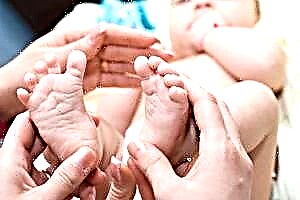
When studying a child's blood test, special attention is paid to the number of leukocytes, because their increase often indicates an infection or acute inflammation in the child's body. However, it is equally important to evaluate the leukocyte formula, which shows which white blood cells are exceeding the norm. These are often neutrophils, because they are normally present in the peripheral blood in large numbers, and increase when exposed to various external factors. What do high neutrophils detected in a child mean and how to normalize their number?

What level is considered elevated
Neutrophils are the most numerous group of white blood cells, the main task of which is to fight against pathogens. There are several forms of such leukocytes:
- Young (also called "metamyelocytes" and "myelocytes") - absent in a normal leukogram.
- Rod neutrophils (rods) - young cells, the content of which in newborns should not exceed 12%, in children under 5 years old - 5%, and in children over five years old - 4%. These are the upper limits of the norm for this type of neutrophil.
- Segmented - the most numerous neutrophils, which are mature cells.

Their upper limit of the norm in childhood is represented by the following indicators:
If the level of neutrophil cells exceeds these indicators, it is called "neutrophilia».
We recommend watching a video, where a specialist from one of the capital's clinics covers in detail the topic of neutrophils:
Causes of neutrophilia
It should be noted that the level of neutrophils directly depends on the cause - the stronger the effect on the child's body, the higher such leukocytes will be.
A slight increase in the percentage of neutrophils occurs during physical or psycho-emotional stress, as well as after eating. If the cause of the high neutrophil count is a disease, then the cell level is directly related to the activity of the disease.

Pathological causes of neutrophilia include:
- Active inflammatory processes, for example, arthritis, pneumonia, dermatitis, inflammation of the pancreas, appendicitis, and others.
- Bacterial infections, including purulent (abscess or phlegmon formation).
- Some viral infections.
- Infections caused by protozoa or fungi.
- Tumor processes.
- Extensive burns.
- Poisoning.
- Diabetes.
- Trophic ulcer.
- The use of certain medications, such as corticosteroids.
- Acute blood loss or hemolysis of erythrocytes.
Also, neutrophils are detected in an increased amount in the postoperative period.

A shift in the leukocyte formula
In addition to an increase in the number of neutrophilic leukocytes, doctors also evaluate due to which forms of these cells the increase in their percentage occurred. Diagnose:
- Shift Formula Left - stab cells are increased, and young forms are also present. This result is typical for severe intoxications, purulent infections, anemia (post-hemorrhagic or hemolytic), leukemia, burns. If the offset is small, intense training or emotional stress may be the cause.
- Shift a formula to the right - the number of “rods” is low, and the percentage of segmented cells is increased. This pattern is less common than a shift to the left. It happens with anemia, polycythemia, leukemia and other pathologies.
Watch the episode of Dr. Komarovsky's CBC program. In it you will hear answers to many questions that interest you:
What to do
If a child's blood test showed an overestimated level of neutrophils, parents should contact a pediatrician, who will immediately send the baby for a second examination, after all, the level of such leukocytes can be determined incorrectly due to non-compliance with such rules:
- The child must definitely donate blood on an empty stomach. If this is an infant, then he should not receive food 2-2.5 hours before blood sampling. Only a little drinking water is allowed as it does not affect the white blood cell count.
- The child should be calm. It is best for the mother to come with the baby to the blood sampling a little in advance, so that the baby can sit a little in the corridor. This will also exclude the effect of temperature differences on the result.
- Avoid vigorous physical activity just before the fence (do not allow the child to run in the corridor of the clinic) and the day before.
If a blood sample was taken with this advice in mind, but the leukocytosis is still due to high neutrophil counts, your doctor will order an additional test. First of all, it will be aimed at identifying an infection or an active inflammatory process.
As soon as the cause of neutrophilia is found, the baby will be prescribed the necessary treatment. When the child's body, with the help of the drugs used, cope with inflammation or an infectious process, the level of neutrophilic leukocytes also normalizes.




